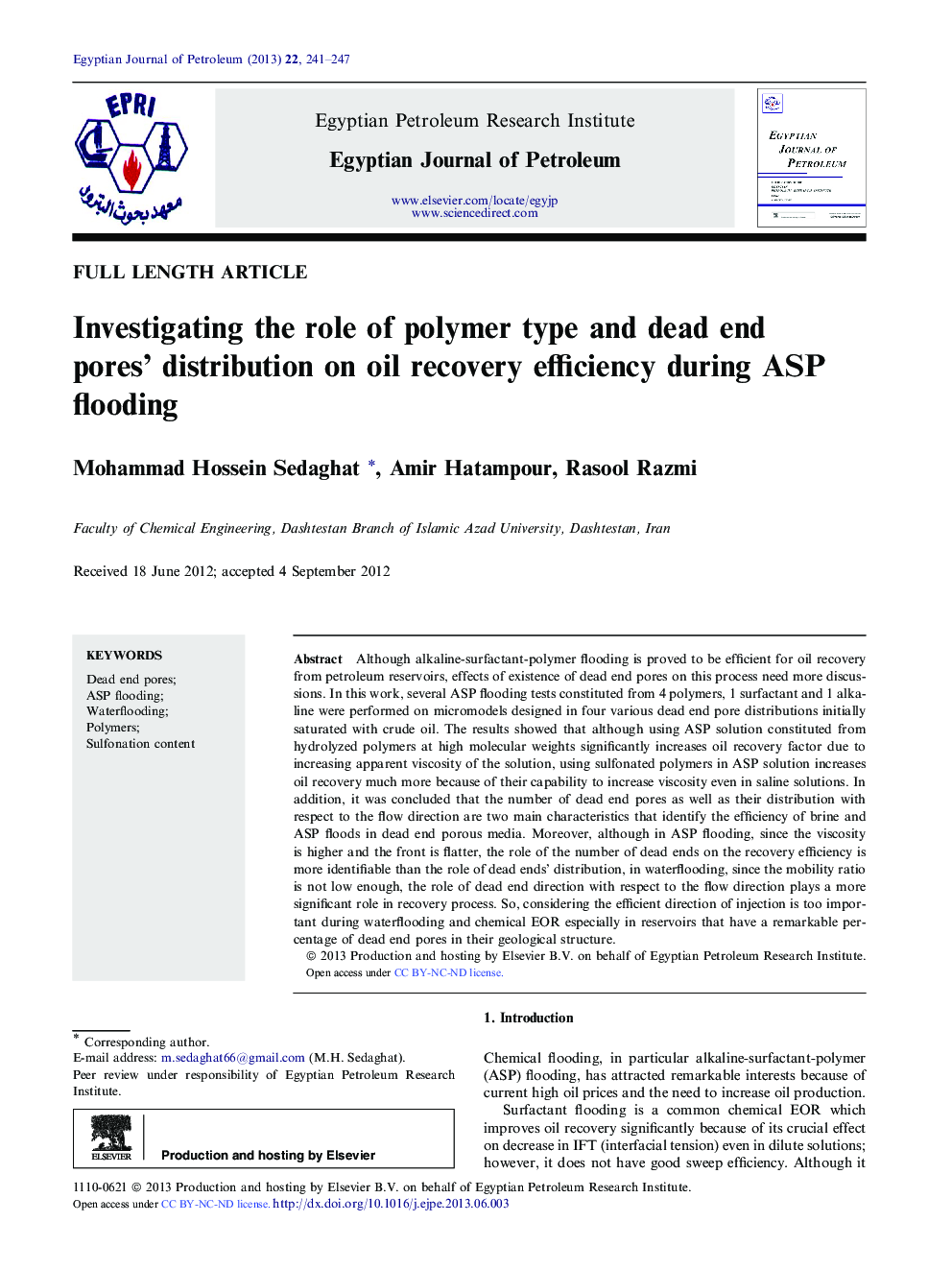| کد مقاله | کد نشریه | سال انتشار | مقاله انگلیسی | نسخه تمام متن |
|---|---|---|---|---|
| 1756822 | 1522980 | 2013 | 7 صفحه PDF | دانلود رایگان |
عنوان انگلیسی مقاله ISI
Investigating the role of polymer type and dead end pores' distribution on oil recovery efficiency during ASP flooding
دانلود مقاله + سفارش ترجمه
دانلود مقاله ISI انگلیسی
رایگان برای ایرانیان
موضوعات مرتبط
مهندسی و علوم پایه
مهندسی انرژی
انرژی (عمومی)
پیش نمایش صفحه اول مقاله

چکیده انگلیسی
Although alkaline-surfactant-polymer flooding is proved to be efficient for oil recovery from petroleum reservoirs, effects of existence of dead end pores on this process need more discussions. In this work, several ASP flooding tests constituted from 4 polymers, 1 surfactant and 1 alkaline were performed on micromodels designed in four various dead end pore distributions initially saturated with crude oil. The results showed that although using ASP solution constituted from hydrolyzed polymers at high molecular weights significantly increases oil recovery factor due to increasing apparent viscosity of the solution, using sulfonated polymers in ASP solution increases oil recovery much more because of their capability to increase viscosity even in saline solutions. In addition, it was concluded that the number of dead end pores as well as their distribution with respect to the flow direction are two main characteristics that identify the efficiency of brine and ASP floods in dead end porous media. Moreover, although in ASP flooding, since the viscosity is higher and the front is flatter, the role of the number of dead ends on the recovery efficiency is more identifiable than the role of dead ends' distribution, in waterflooding, since the mobility ratio is not low enough, the role of dead end direction with respect to the flow direction plays a more significant role in recovery process. So, considering the efficient direction of injection is too important during waterflooding and chemical EOR especially in reservoirs that have a remarkable percentage of dead end pores in their geological structure.
ناشر
Database: Elsevier - ScienceDirect (ساینس دایرکت)
Journal: Egyptian Journal of Petroleum - Volume 22, Issue 2, December 2013, Pages 241-247
Journal: Egyptian Journal of Petroleum - Volume 22, Issue 2, December 2013, Pages 241-247
نویسندگان
Mohammad Hossein Sedaghat, Amir Hatampour, Rasool Razmi,